“When children are involved it helps to engage all the school community – parents and teachers are more aware of the details of a project because of what they see the children do. ” – Headteacher
Identifying problems, designing solutions, safe use of wood carving tools, 2D and 3D shape recognition, social and emotional development, habitats and plants, microclimates, insulation, and more… Learning outdoors to deliver a ‘real world’ project engaged the children enthusiastically. “We are one of the luckiest schools on the planet.” said a Year 4 pupil.
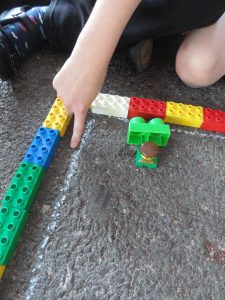
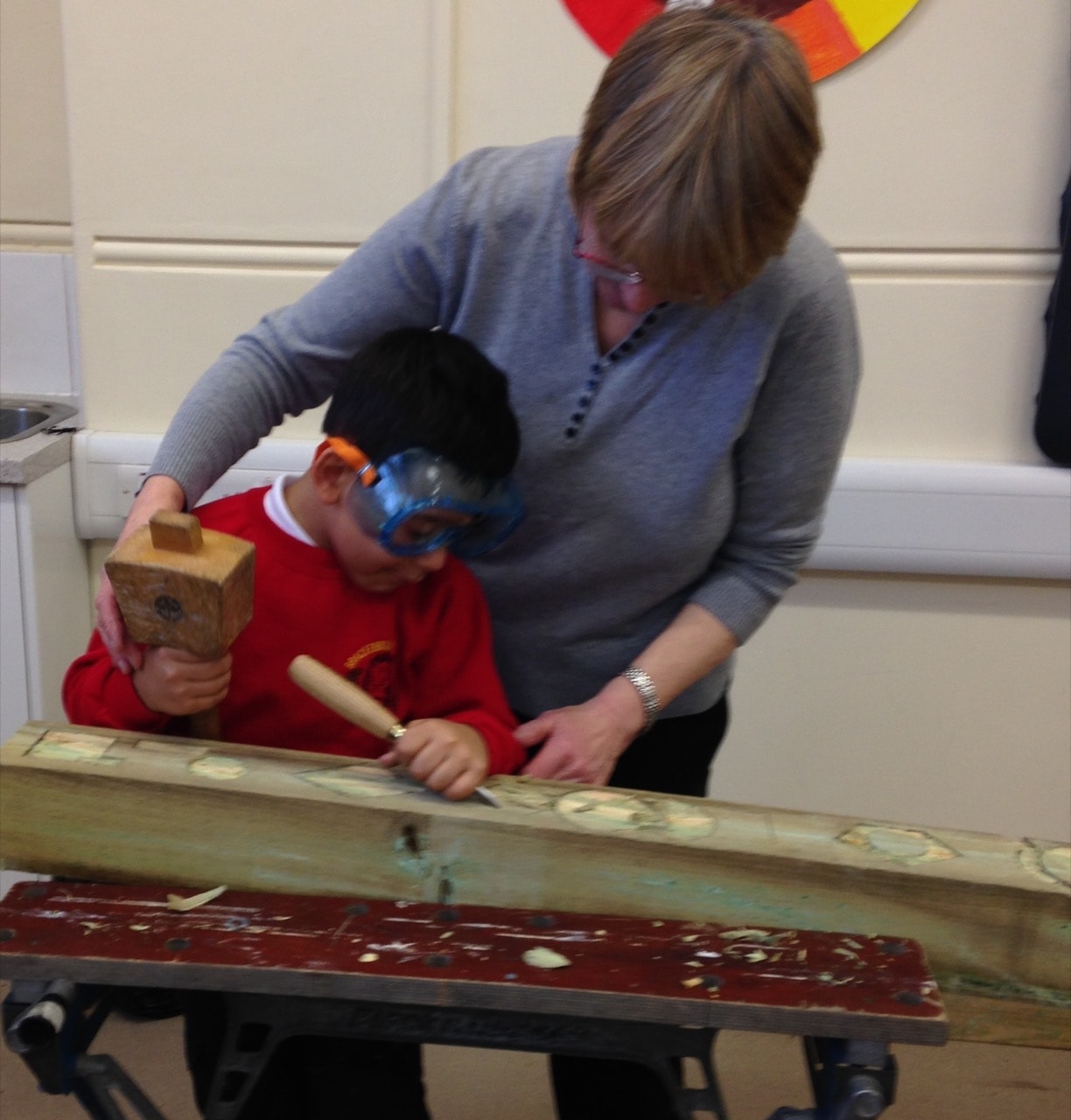
Using Lego for problem solving – Wood carving with Felicity
Background
This grounds development, at a London Primary school, was delivered through the active involvement of Year 3 and Year 4 classes in the design and implementation of the project. The grounds required a “Master Plan’ for development over several years, as the funds available were small. The school was very keen to ensure that they spent the money wisely and within the context of an overview of the long term so each small project fitted into a coherent plan.
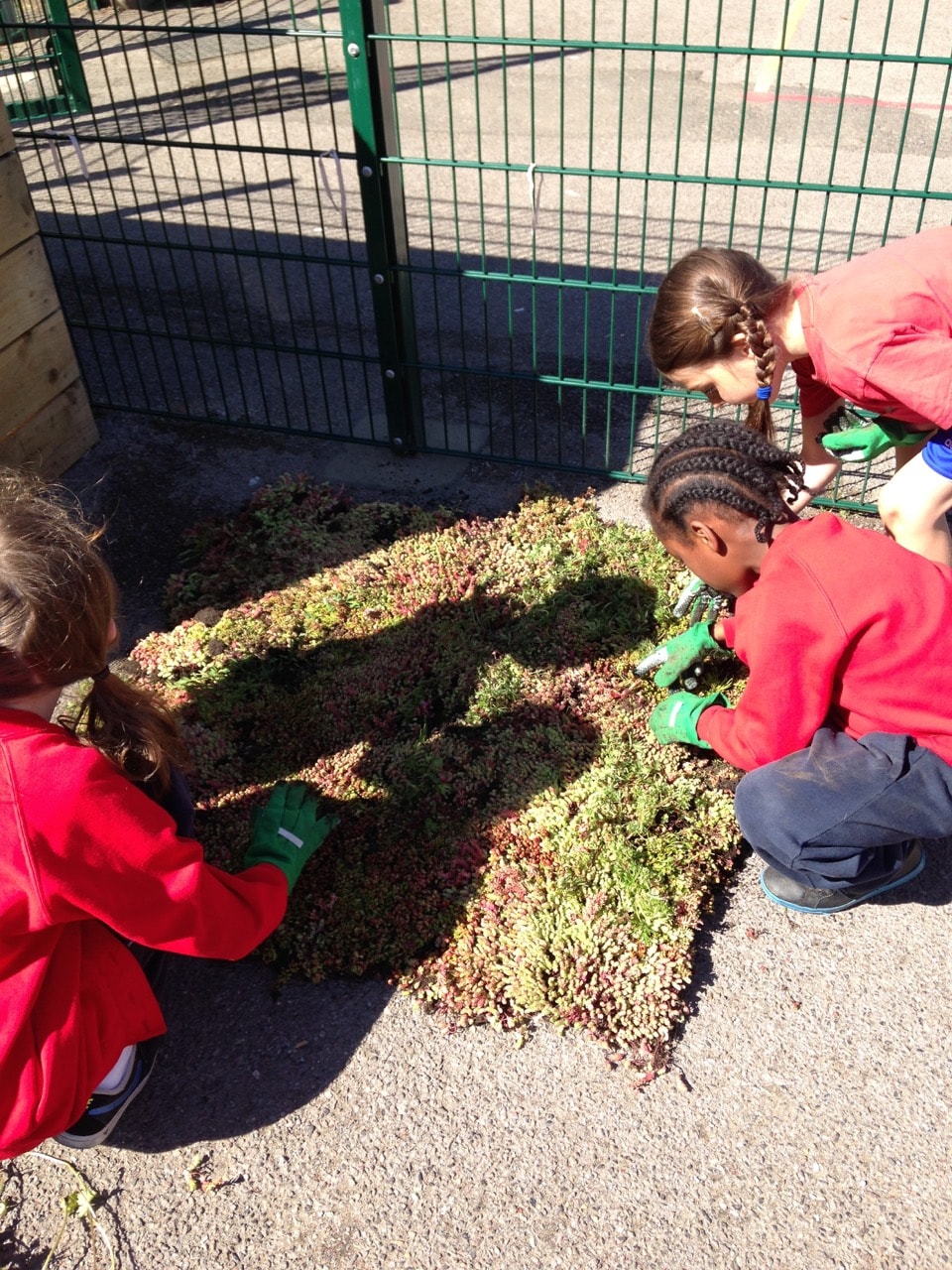

Inspecting the sedum before installation – Testing wind protection ideas
Process
Landscapes Naturally worked with the whole school community to develop the brief and generate a shared understanding of their aims and aspirations for outdoor learning and play. Agreeing priorities for first stage delivery involved a good degree of debate!
Children in school council were also involved in identifying key issues and opportunities in the grounds, and were actively involved in developing solutions, such as wind protection planting around the stage, as well as new fencing to improve the functionality of this place.
Year 3 and Yr4 were key classes involved in curriculum linked tasks that contributed to the implementation of the scheme.
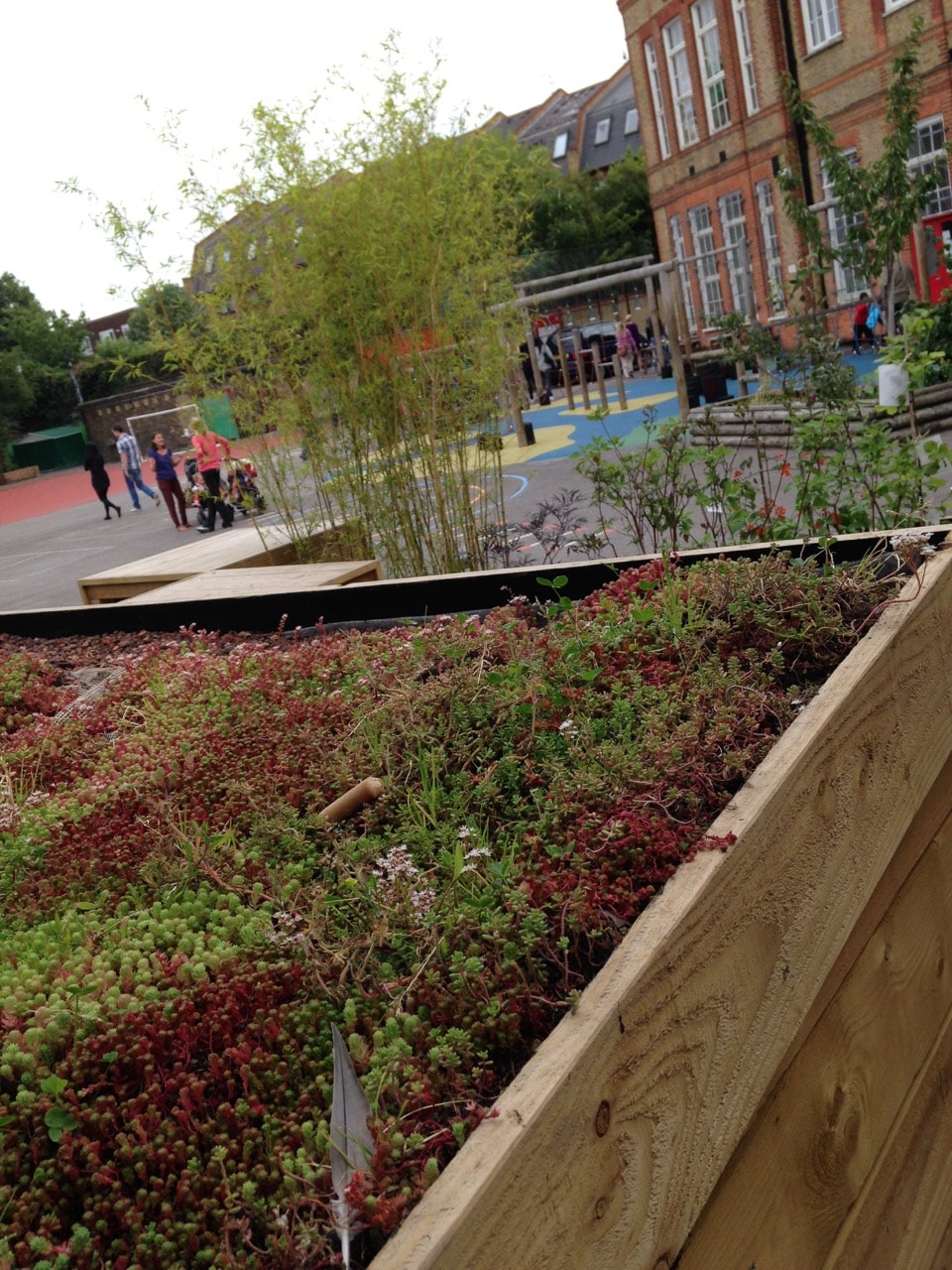

Green roof shelter – Shady chatterboxes on a sunny day
Outcomes
“I am sure you will all agree this is an exciting and wonderful experience where learning becomes fun”…So began a speech by one of the children when they spoke at the ‘opening’ event to celebrate the completion of planters, mini forest, stage, shade, & play resources. These quotes from the children’s presentations at the event illustrate the difference it has made to the children involved in the project. “It’s fun learning outside’ “We can eat what we grow for healthy snacks’ ‘The wood carving for the stage area was hard and fun’ “Now we have more places to chat together’
Staff have been delighted with the outcomes of the project the ‘ownership’ of the children, and the changes to play and behavior at break times now that there are a variety of quieter areas for social and imaginative play.
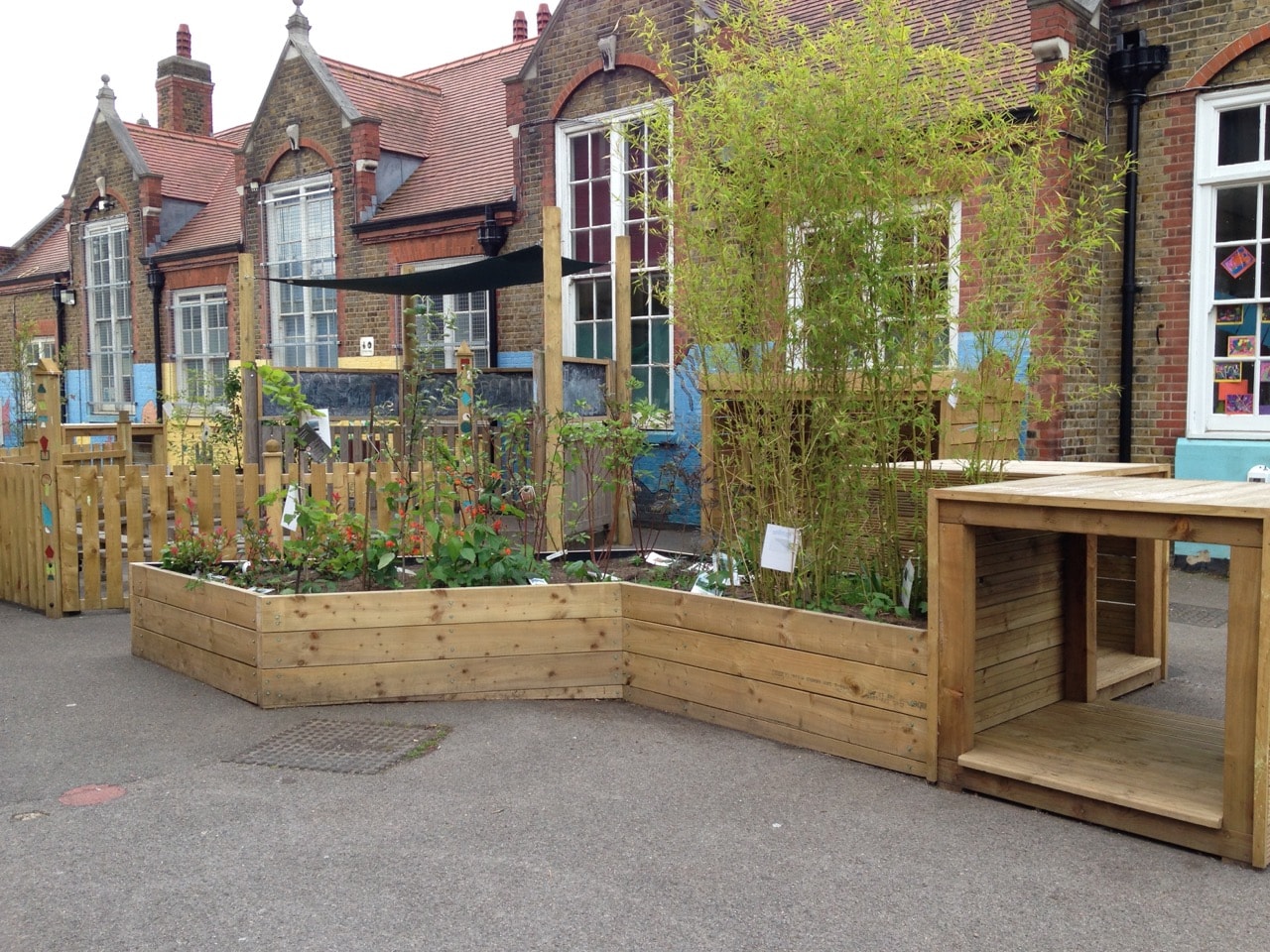
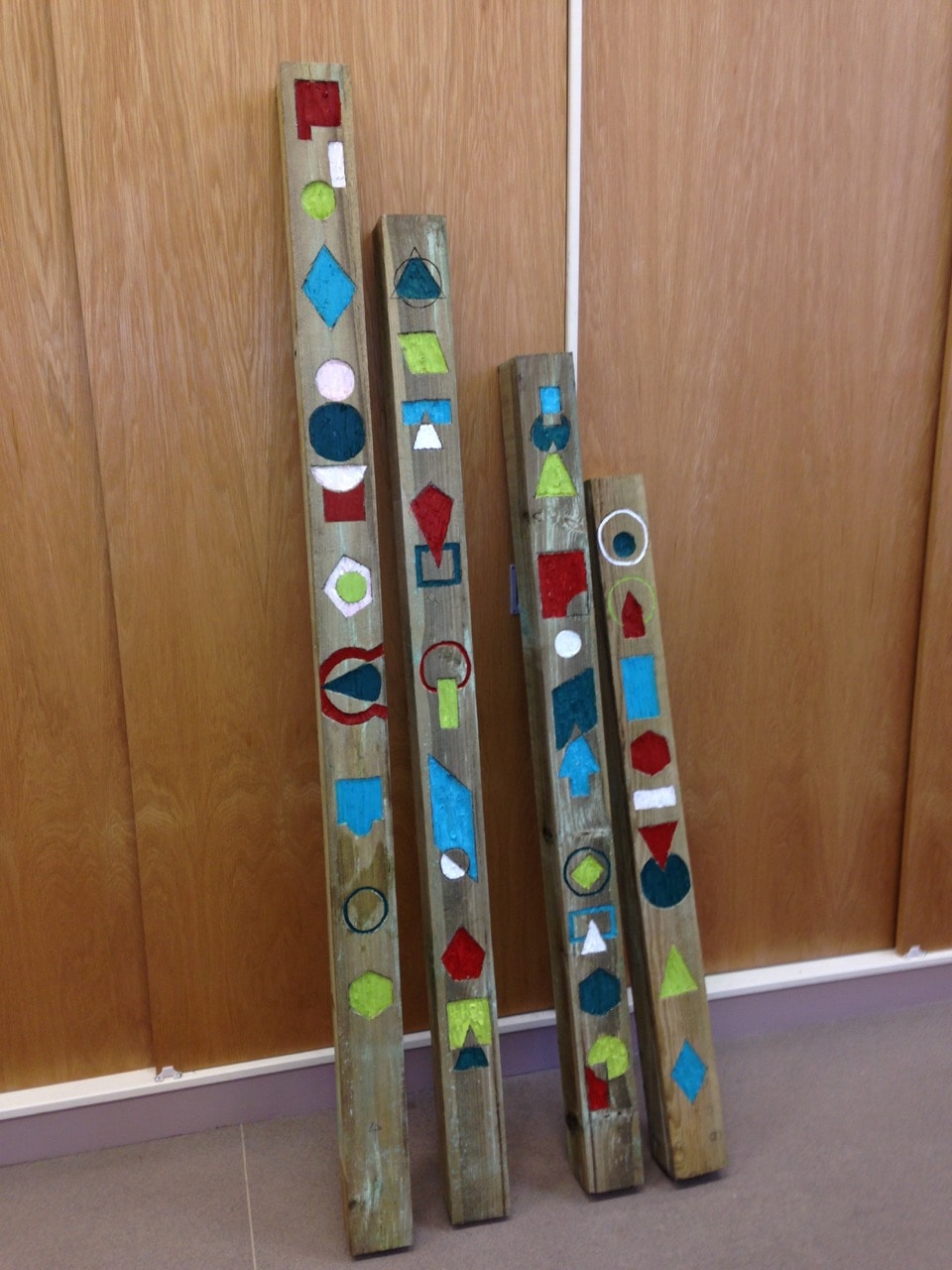
Finished chatterboxes stage and plants – Carved posts ready for installation
An evaluation conversation with Head and Deputy Head at Brackenbury Primary school, 2015
A long term supportive relationship over several years has guided some significant changes in the playground. Here’s what they said about Felicity Robinson, Landscapes Naturally.
What do you value about the support I give to your projects?
An expert’s eye! Whilst we will have a clear idea of what we want to achieve with a space (the need it will fill, for example) we don’t always have the skills or knowledge to design it in detail to maximise the impact on pupils. Having worked with lots of other schools, your experiences of things that have worked (or not!) help us to reach final decisions. This may include planting, materials, communicating with parents – any of the far-reaching implications of project design and management. Not least, helping with the applications for grants.
I have worked with you over a number of years, what has been the impact on the children, over time, of the changes we have made to the playground?
The biggest impact is that our playground is used more for outdoor learning by teachers and pupils. The changes have made it more interesting and interactive for pupils. The focus has been on creating attractive, durable, versatile areas that can be used for both independent play (such as at breaktimes) and for adult-led activities (such as when a teacher takes a class outside for their lesson). The children have also been consulted and involved at different stages and therefore feel an ‘ownership’ of the changes.
How would you describe what I do, to other schools?
Creative, practical design and engaging the children in outdoor learning. You listen to what the school’s needs are and help them to implement projects that will develop their playgrounds.
To what extent has the engagement of the children been a useful addition to the process?
When children are involved it helps to engage all the school community – parents and teachers are more aware of the details of a project because of what they see the children do. ‘Pupil voice’ is very important to us as a school, so involving them in the consultation and design stages are a way of reinforcing the message that this is a community school where all opinions are valued. The wood carving workshops were fantastic because we have pupils playing on and around equipment being able to say “I made that!”
To develop your outdoor learning and school grounds get in touch
with Felicity on 07968 771582 or email info@landscapesnaturally.co.uk

